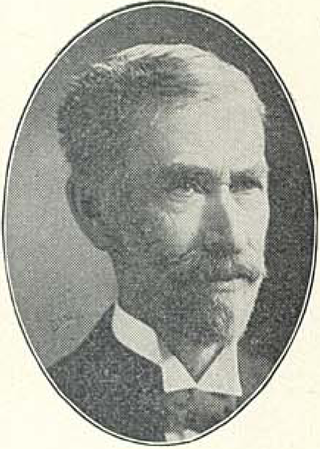
Winnebago County is a county in the U.S. state of Wisconsin. As of the 2020 census, the population was 171,730. Its county seat is Oshkosh. It was named for the historic Winnebago people, a federally recognized Native American tribe now known as the Ho-Chunk Nation. Chief Oshkosh was a Menominee leader in the area. Winnebago County comprises the Oshkosh-Neenah, WI Metropolitan Statistical Area, which is included in the Appleton-Oshkosh-Neenah, WI Combined Statistical Area.

Wisconsin has a long history with the Boy Scout and Girl Scout organizations from the 1910s to the present day, both programs have independently served thousands of youth in programs that suit the environment in which they live.

Lake Winnebago is a shallow freshwater lake in the north central United States, located in east central Wisconsin. At 137,700 acres, it is the largest lake entirely within the state, covering an area of about 30 miles by 10 miles with 88 miles of shoreline, an average depth of 15.5 feet, and a maximum depth of 21 feet. It has many shallow reefs along the west shore and a drop-off type shoreline on the east. There are several islands along the west shore.

The Fox Cities of Northeastern Wisconsin are the cities, towns and villages along the Fox River as it flows from Lake Winnebago northward into Green Bay.

Interstate 41 (I-41) is a 175.00-mile-long (281.64 km) north–south Interstate Highway connecting the interchange of I-94 and U.S. Route 41 (US 41), located about a mile (1.6 km) south of the Wisconsin–Illinois border at the end of the Tri-State Tollway in metropolitan Chicago, to an interchange with I-43 in metropolitan Green Bay, Wisconsin. The designation travels concurrently with US 41 for its entire length, as well as portions of I-894, US 45, I-43, and sections of I-94 in Wisconsin and Illinois. The route was officially added to the Interstate Highway System on April 7, 2015, and connects Milwaukee and Green Bay with the Fox Cities.

Fox Valley Technical College is a public technical college in Grand Chute, Wisconsin. It is a member of the Wisconsin Technical College System and serves people in the Appleton, Wisconsin/Fox Cities area. It serves about 50,000 people each year and offers more than 200 associate degree, technical diploma, and certificate programs as well as instruction related to 20 apprenticeship trades. It has credit transfer agreements with more than 30 four-year colleges and universities.

The Miss Wisconsin competition is the pageant, held annually in Oshkosh, that selects the representative for the U.S. state of Wisconsin in the annual Miss America pageant.

Michael Kieran Reilly was an Irish American lawyer and Democratic politician from Fond du Lac, Wisconsin. He served six full terms and one partial term in the U.S. House of Representatives, representing Wisconsin's 6th congressional district from 1913 to 1917, and from December 1930 to January 1939. Earlier in his career, he served as district attorney of Fond du Lac County and city attorney of Fond du Lac.

Festival Foods is a family owned American supermarket chain operating stores throughout Wisconsin. It was founded in 1946 by Paul and Jane Skogen as Skogan's IGA in Onalaska, Wisconsin, and is still owned by the Skogen family. Festival's private label brands are supplied by SuperValu.
Michael Gruper Ellis was an American farmer and Republican politician from Neenah, Wisconsin. He served 44 years in the Wisconsin Legislature, including 12 years in the Wisconsin State Assembly (1971–1983) and 32 years in the Wisconsin Senate (1983–2015). He was Republican floor leader in the Senate from 1989 to 2000, and was President of the Wisconsin Senate for most of the 2011–2012 term and all of the 2013–2014 term.

GO Transit, formerly the Oshkosh Transit System, is the primary provider of mass transportation in Winnebago County, Wisconsin.
The 18th Senate district of Wisconsin is one of 33 districts in the Wisconsin Senate. Located in east-central Wisconsin, the district comprises parts of northeast Winnebago County and southern Outagamie County. It includes the cities of Menasha and Neenah, most of the city of Appleton, and the northern half of the city of Oshkosh. It contains landmarks such as College Avenue Historic District, Lawrence University, and the University of Wisconsin–Oshkosh campus.
The Valley Football Association (VFA) is a football-only athletic conference comprising fifteen high schools located within northeastern and central Wisconsin. The conference was formed in 2010, when the Wisconsin Interscholastic Athletic Association merged the Fox Valley Association (FVA) and Wisconsin Valley Conference (WVC). The merger was a result of the WVC having difficulty scheduling football games due to only having six active football participants at the time. The first season of play was 2011.

James R. Barnett, Sr., was an American medical doctor, banker, and Republican politician. He served two years in the Wisconsin State Assembly, representing northern Winnebago County.
Fox Crossing is a village in Winnebago County, Wisconsin, United States. It was incorporated from the former town of Menasha in 2016. The population as of the 2020 census was 18,974.
Morris S. Barnett was an American politician.
The Fox River Valley Conference, or FRVC, was a Wisconsin Interscholastic Athletic Association (WIAA) affiliated high school athletic conference in northeastern Wisconsin. Formed in 1923, it was in existence until the conclusion of the 2007 spring sport season. Afterwards, the conference and its eight members joined with four schools from the Bay Conference to form the Fox River Classic Conference.

Samuel McClellan Hay was an American businessman, banker, Republican politician, and Wisconsin pioneer, prominent in the establishment and development of Oshkosh, Wisconsin. He was the fifth mayor of Oshkosh, and served one year each in the Wisconsin Senate (1862) and State Assembly (1858) representing Winnebago County. His name was often abbreviated as S. M. Hay.












